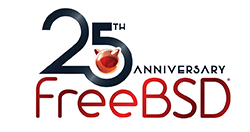All people within the IT Industry should known where the slogan “The Power To Serve” is exposed every day to millions of people. But maybe too much wishful thinking from me. But without “The Power To Serve” the IT industry today will look totally different. Companies like Apple, Juniper, Cisco and even WatsApp would not exist in their current form.
I provide IT architecture services to make your complex IT landscape manageable and I love to solve complex security and privacy challenges. Complex challenges where people, processes and systems are heavily interrelated. For this knowledge intensive work I often run some IT experiments. When you run experiments nowadays you have a choice:
- Rent some cloud based services or
- DIY (Do IT Yourself) on premise
Running your own developments experiments on your own infrastructure can be time consuming. However smart automation saves time and money. And by creating your own CICD pipeline (Continuous Integration, Continuous Deployment) you stay on top of core infrastructure developments. Even hands-on. Knowing how things work from a technical ‘hands-on’ perspective gives great advantages when it comes to solving complex business IT problems. Making a clear distinguish between a business problem or IT problem is useless. Business and IT problems are related. Sometimes causal related, but more often indirect by one or more non linear feedback loops. Almost every business depends of IT systems. Bad IT means often that your customers will leave your business.
One of the things of FeeBSD for me is still FreeBSD Jails. In 2015 I had luck to attend to a presentation of the legendary hacker Poul-Henning Kamp . Check his BSD bio to see what he has done for the FreeBSD community! FreeBSD jails are a light way to visualize your system without enormous overhead. Now that the development on Linux for LXD/LXD is more mature (lxd is the next generation system container manager on linux) there is finally again an alternative for a nice chroot Linux based system again. At least when you do not need the overhead and management complexity that comes with Kubernetes or Docker.
FreeBSD means control and quality for me. When there is an open source package I need, I want to install it from source. It gives me more control and always some extra knowledge on how things work. So no precompiled binaries for me on my BSD systems! If a build on FreeBSD fails most of the time this is an alert regarding the quality for me.
If a complex OSS package is not available at all in the FreeBSD ports collection there should be a reason for it. Is it really that nobody on the world wants to do this dirty maintenance work? Or is there another cause that running this software on FreeBSD is not possible…There are currently 32644 ports available on FreeBSD. So all the major programming language, databases and middleware libraries are present. The FreeBSD organization is a mature organization and since this is one of the largest OSS projects worldwide learning how this community manages to keep innovation and creates and maintains software is a good entrance for learning how complex IT systems function.
FreeBSD is of course BSD licensed. It worked well! There is still a strong community with lots of strong commercial sponsors around the community. Of course: sometimes a GPL license makes more sense. So beside FreeBSD I also love GPL software and the rationale and principles behind it. So my hope is that maybe within the next 25 years the hard battle between BSD vs GPL churches will be more rationalized and normalized. Principles are good, but as all good IT architects know: With good principles alone you never make a good system. So use requirements and not only principles to figure out what OSS license fits your project. There is never one size fits all.
June 19, 1993 was the day the official name for FreeBSD was agreed upon. So this blog is written to celebrate 25th anniversary of FreeBSD.
